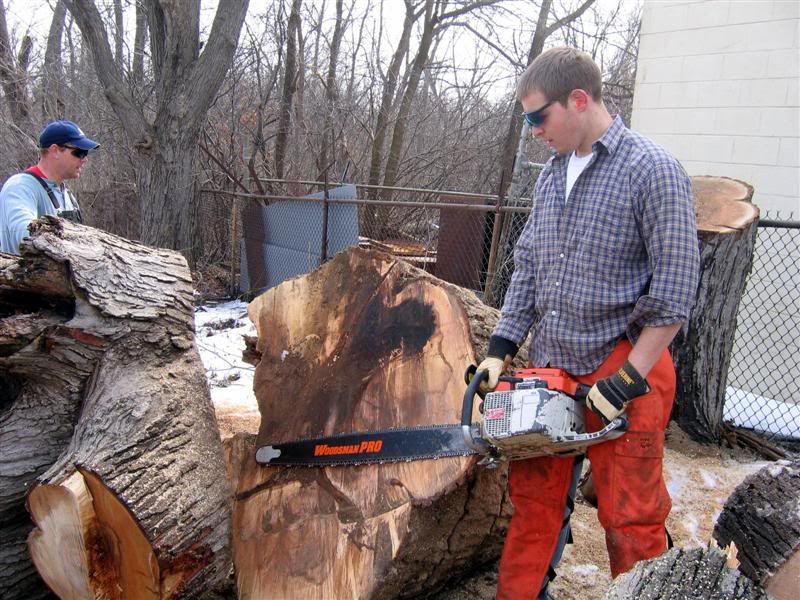I've seen some posts where folks talk about changing the "gear ratio" of the saw/chain by changing the sprocket. Example: go from the standard 7 tooth to an 8 tooth. It seems that most talk about going bigger - longer gear ratio.
In "normal" (non race) applications, why would this make sense? In my mind, I would want a little lower gear ratio so as not to bog the saw down. When I pull a load up a hill in my truck, I come out of overdrive. I realize that its 2 stroke vs. 4 stroke, but isn't the concept similiar? Get the rmps of the saw up into its "power band" and sweet spot and then use a lower gear ratio for better torque.
What magic is there in a higher chain speed with less torque that would produce better results than lower chain speed and higher torque?
Is there any higer risk of throwing a chain with a smaller vs. larger sprocket?
If you were to gear down with a smaller sprocket, could you pull a full comp chain where you were using a skip chain?
JQ
In "normal" (non race) applications, why would this make sense? In my mind, I would want a little lower gear ratio so as not to bog the saw down. When I pull a load up a hill in my truck, I come out of overdrive. I realize that its 2 stroke vs. 4 stroke, but isn't the concept similiar? Get the rmps of the saw up into its "power band" and sweet spot and then use a lower gear ratio for better torque.
What magic is there in a higher chain speed with less torque that would produce better results than lower chain speed and higher torque?
Is there any higer risk of throwing a chain with a smaller vs. larger sprocket?
If you were to gear down with a smaller sprocket, could you pull a full comp chain where you were using a skip chain?
JQ






